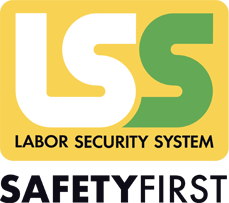The safety glossary
The most industrialized countries have developed various protective measures, in the form of rules, regulations and standards developed in order to achieve a high safety level. The glossary presented below is intended as a quick reference to some definitions of general terms commonly used in the field of occupational safety.
- A
ATEX
The word ATEX derives from the French word ATmosphères EXplosives. This legislation groups two directives of the European Union:
- 2014/34 / EU for the regulation of equipment intended for use in areas at risk of explosion;
- 99/92 / EC for the safety and health of workers in explosive atmospheres.
EXPLOSIVE ATMOSPHERE
An explosive atmosphere is a mixture of flammable substances in the state of gases, vapors, mists or combustibles in a dusty state, mixed with air or comburent which, in certain atmospheric conditions, trigger a combustion.
ASSESSMENT RISK
By assessment of the risk we mean the global, documented assessment of all risks to workers’ health and safety. The assessment of the risk document shall include all the possible dangers present in the plant, evaluating how these can be transformed into risks. The purpose of the assessment of the risk is to identify adequate prevention and protection measures, and to draw up the program of measures, necessary to ensure the improvement of health and safety levels over time. - C
CDM
Construction, Design and Management regulations This acronym identifies the main set of regulations for managing the health, safety and welfare of construction projects. The CDM applies to all construction works and includes demolitions, renovations, extensions, repairs and maintenance.
COMMON CAUSE FAILURE (CCF)
Common cause failures or CCF are failures of two or more system elements, due to a single factor (eg fire or innovation), where such failures are not based on a mutual cause. - D.
DAMAGE
Any temporary or permanent alteration, of the human organism or of the elements of a plant (of architectural nature or with reference to machinery and processes). - E.
ERROR
Mistake, error of judgment that leads to the action resulting in an accident and its subsequent effects.
EXPLOSION
Rapid or violent phenomenon, resulting from a chemical reaction that involves the decomposition of an unstable substance, triggered by mechanical (shock, friction) or thermal (sparks, temperature increase) causes, with the production of a considerable gaseous mass and heat over very short time.
ETA
Event Tree Analysis: A graphical method to explore how an initial (dangerous) event can lead to an accident, through a series of further events. The method allows to verify the barriers to the escalation of the danger (mitigations) and to calculate the probabilities related to various outcomes. - F.
FMEA
Failure Modes and Effects Analysis: analysis of the modes and effects of errors. This technique identifies hazards by considering the individual elements of a system, determines how each element can fail, and explores the effects of each of these failures on the operation of the system as a whole. The FMEA can also be used to quantify the failure rate of the entire system by adding up the contribution of each individual element.
FTA
Fault Tree Analysis: A graphical method of analyzing how a main (generally dangerous) event can be caused by lower level events combined by logical operators (the most frequent are AND and OR). The method is useful for identifying single points of failure or limited redundancy in complex systems and can be used for system availability and reliability calculations. - H.
HAZOP
Hazop is the crasis of HAZard and OPerability: a systematic method of identifying hazards using a team-based approach and applying a series of standard steps to elements of a project, to determine how these might deviate from the designers' intent, and what the results would be . The method originated in chemical process industry where it was applied to plant and instrumentation diagrams, but today it has been more widely adopted and applied to different design stages. - I.
IECEX
IECEx is a voluntary international system of equipment certification for the usage in explosive atmospheres. It is internationally accepted to demonstrate compliance with international Ex standards.
INERTIFICATION
Explosion prevention technique which consists in partial or total replacement of oxygen - contained in the air of the system that must be protected from the explosion - with an inert gas, until its content is reduced below a given concentration, at which the explosion cannot occur. - M.
CE MARKING
The CE mark is a mark that must be affixed to certain types of products by the manufacturer himself, which with it self-certifies compliance (or conformity) with the essential requirements for marketing and use in the European Union established in the new approach directives. The affixing of the trademark is required by law.
MITIGATION
Mitigation is a set of factors or events that can prevent escalation from hazard to accident, or that can reduce the likelihood or severity of an accident. Mitigation can be carried out both with technological means and with specific procedures. - N.
NEC
The National Electrical Code (NEC), or NFPA 70, is an American standard that can be adopted regionally in the United States for the safe installation of electrical wiring and equipment. It is part of the National Fire Code series published by the National Fire Protection Association (NFPA), a private trade association.
NEGLIGENCE
Failure to perform an action that a reasonable or prudent person would do instead, guided by the considerations that normally govern the conduct of human beings. - P.
(Presence of ) DANGER
A state or condition in which personal injury or pecuniary damage is reasonably foreseeable. Danger implies the presence of a risk.
PLANT ASSET MANAGEMENT
Plant Asset Management is a package of services and products that collaborate with each other for the management of instrumental assets within a plant. A Plant Asset Management system helps the company to obtain a complete view of the installed base and provides the tools to improve process availability and minimize risks.
PPE
Personal Protective Equipment, personal protective equipment such as face masks, gloves, protective clothing, special footwear and so on. - R.
RISK
Risk is the combination of the probability of damage occurring and the severity of that damage. The danger represents the basic cell that triggers a risky situation. After the hazard analysis and the implementation of the corresponding risk reduction measures, the so-called "residual risk" may still remain. - S.
SAFETY AUDIT
Monitoring the implementation of a security policy, subjecting each area of a activity to a systematic critical examination in order to minimize possible losses and provide a quantified evaluation of performance.
SAFETY INTEGRITY LEVEL (SIL)
A safety systems performance measurement, in terms of reliability or probability of failure on demand. There are four SIL safety levels. The higher the SIL level (SIL 4 is the highest grade), the higher the associated safety level, and the less likely it is that a system will malfunction.
FUNCTIONAL SAFETY
Functional safety is the property of a system designed to guarantee safety according to the functions that the system performs. These functions generally fall into two categories:
- control functions, to ensure that the equipment remains in a safe state;
- protection functions, which put the system or a part of it in a safe state.
SIS
Safety Instrumented System, instrumented safety system. This term is mainly used in the chemical-pharmaceutical sector and related processes to indicate a protection system that intervenes to make a plant safe, if the measurements of the plant parameters require so. - Z.
DANGEROUS AREA (ZONE)
A dangerous area is any area inside the plant, or near a work equipment, in which the presence of a worker constitutes a risk to his health or safety.
(source: https://www.connectendress.it/)

